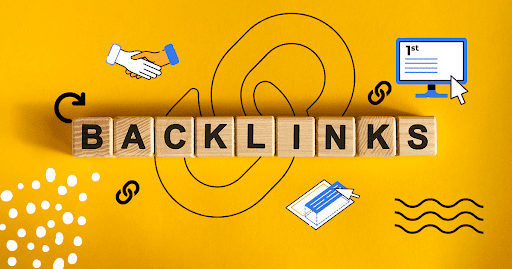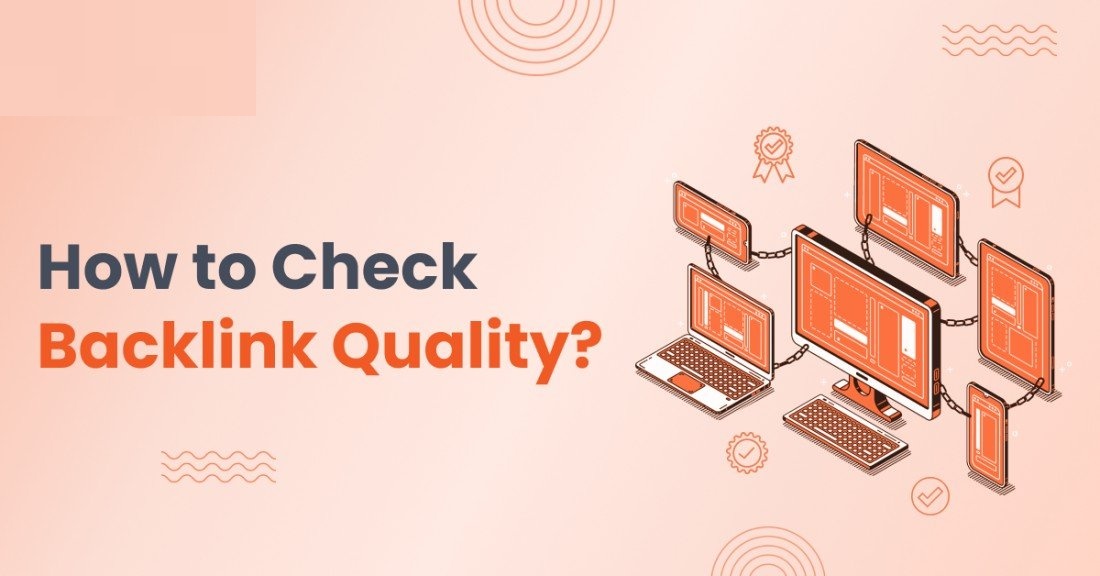How To Evaluate Backlink Quality - Expert Insights
Learn how to evaluate backlink quality with these actionable tips. Discover criteria to spot high-value links and improve your SEO performance.

Jan 04, 2025
Backlinks are one of the most significant ranking factors in SEO, but not all backlinks carry equal weight. The quality of the links pointing to your site can make or break your SEO strategy.
High-quality backlinks boost your site’s credibility and improve its search engine rankings, while low-quality ones can have the opposite effect.Evaluating backlink quality has become a crucial part of any successful SEO campaign.
1. What Is Backlink Quality?
In SEO, a quality backlink is a dofollow link placed within the main content of a reputable, high-authority website that aligns with your topic. Ideally, these backlinks use relevant keywords as anchor text and direct traffic to a page on your site.
However, backlink quality is not an all-or-nothing measure; it exists on a spectrum. A backlink can still be valuable even if it doesn’t meet all these criteria. In reality, it’s uncommon to acquire links that fulfill more than a few of these attributes.
2. What Makes A Link High Quality?
Backlink quality should be assessed both at the individual link level and as part of your website's overall backlink profile.
There Are Five Main Criteria For Evaluating Backlinks And Link Profiles:
- Anchor text relevance
- Relevance and quality of the linking page’s content
- Quality and relevance of the linking domain
- IP address
- Location of the link on the page
Unfortunately, there are no strict rules for evaluating each link. Instead, it’s essential to analyze each backlink’s quality both individually and in the context of your entire link profile.
1. Anchor Text Relevance
Anchor text is the clickable text of a hyperlink, typically displayed as underlined and often in blue. When Google crawls a page, it uses the anchor text to gauge the relevance of the destination URL to the linking page.
On an individual level, the ideal anchor text includes the target keyword for the destination page in a natural and relevant manner. For instance, in an article about gardening that links to a page selling trowels, anchor text like "trowel," "spade," "shovel," or "gardening tools" would be ideal.
Anchor text must also align with the linking page’s content. For example, a link to a garden trowel page using "spade" as anchor text is highly relevant if the linking page is about gardening. However, if the linking page is about speakers, the backlink quality diminishes. This mismatch often occurs on questionable pages promoting gambling or illegitimate pharmaceuticals.
While keyword-rich anchor texts are highly valuable, relying solely on them can backfire. A backlink profile with nothing but keyword-rich anchors appears unnatural and could trigger penalties from Google for attempting to manipulate search rankings.
A healthy backlink profile includes a diverse range of anchor texts, such as:
- Keyword-rich anchors
- Anchors featuring your company, website, or brand name
- Generic phrases like "click here" or "this page"
Established websites typically acquire a variety of anchor texts over time.
When assessing your overall backlink profile, pay close attention to anchor text and the surrounding text. Blackhat SEO tactics or negative SEO attacks often result in a flood of links with identical anchor texts and surrounding content, which can harm your site’s credibility and rankings.
See Also: Unlocking The Power Of Generative AI In Cybersecurity
2. Linking Page And Domain Relevance And Quality
Page relevance is a key factor in determining the quality of a backlink, alongside anchor text. Links from high-quality pages with content closely aligned with your page's topic tend to pass significantly more link equity than links from irrelevant or low-quality pages.
The role of the linking page within its domain also matters. Pages with no internal links pointing to them, known as orphan pages, are less valuable since they don’t carry much of the domain's overall authority.
3. Evaluating Linking Page Or Domain Quality
Determining the quality of a linking page or domain can be subjective, but you can use tools like Moz, Ahrefs, or Majestic, or assess manually by considering these factors:
- Topic Relevance
- Does the page’s content align with the overall topic or niche of the website?
- For example, unrelated topics on news sites aren’t problematic, but a page about online poker on a local food blog raises red flags.
- Content Monetization
- While ads are acceptable, overly aggressive monetization (e.g., excessive affiliate links) can detract from user experience and indicate lower content quality.
- Content Value
- High-quality pages provide genuine value to users, unlike thin, over-optimized, or scraped content. Links from low-value pages won’t contribute much.
- IP Address Diversity
- A high concentration of links from domains sharing the same IP address suggests a private blog network (PBN), which Google penalizes.
- Be cautious of links originating from spam-heavy regions, like Russia or China, unless your business operates there.
- Unique Domains
- While links from domains already linking to you aren’t worthless, acquiring backlinks from new domains offers greater link equity.
- Proximity to Trusted Sites
- Google uses a network of trusted "seed sites" to evaluate link authority. The closer a linking page is to these trusted sites (e.g., directly linked to Wikipedia), the more valuable the backlink.
4. Link Location
The placement of a link on a page significantly affects its value:
- Links in body content are the most valuable for SEO, as they are integrated into the main content.
- Links appearing higher up on a page generally pass more link equity than those lower down, as they’re perceived as more important.
- The value of a link also depends on its proximity to high-quality links. For instance, being listed alongside links to trusted sites like Wikipedia or CNN boosts its credibility.
The total number of links on a page impacts the equity each link passes. A page overloaded with external links (200 or more) might appear as though it exists purely to sell backlinks, which could harm your SEO.
5. Referral Traffic
Beyond SEO, backlinks also drive referral traffic to your site. While this won’t directly improve your search rankings, it can contribute positively to your overall marketing efforts.
3. Quality Vs Quantity Backlinks
In Google’s early days, the primary ranking factor for determining which pages to display in search results was the sheer number of backlinks pointing to a page. At the time, Google’s methods for crawling pages and websites were far less advanced.
Initially, focusing solely on backlink quantity made the system easy to exploit. Black hat SEOs would manipulate rankings by purchasing links, engaging in link exchange schemes, and flooding low-quality websites with spammy links.
This allowed irrelevant and low-value pages to rank higher, negatively impacting the user experience.To combat this, Google gradually refined its algorithms, shifting away from relying on backlink quantity.
Over time, penalties were introduced for sites with excessive blackhat backlinks. Google began prioritizing link relevance and the value of contextual backlinks, ensuring higher-quality pages appeared in search results.
Related: 7 Key Differences Between Average Vs. Amazing Landing Pages
4. Why Backlink Quality Matters For SEO
Backlinks function as endorsements of your website. When authoritative websites link to your content, it signals to search engines that your content is valuable and trustworthy. However, not all backlinks are created equal high-quality backlinks from reputable sites can improve your rankings, while low-quality ones can damage your SEO efforts.
Google’s algorithm increasingly focuses on the E-E-A-T (Expertise, Experience, Authoritativeness, Trustworthiness) of websites, and backlinks play a significant role in this evaluation. High-quality backlinks are typically from trusted, relevant sources and demonstrate your site's credibility.
- Authority: Links from high-authority domains significantly influence rankings. Metrics like Domain Authority (DA) and Page Authority (PA) are key indicators to measure this.
- Relevance: Search engines consider the context in which your backlink appears. A backlink from a relevant website within your niche holds more value.
- Organic Traffic: Websites with substantial organic traffic can lend more credibility to your content through backlinks.
- Placement: Links placed in the body of the content are more valuable than those placed in sidebars or footers.
5. Evaluating the quality of a backlink requires looking at several factors. Here’s how to distinguish a valuable backlink from one that could harm your SEO:
Authority Of The Linking Domain
A high-quality backlink comes f - rom a site with strong Domain Authority (DA). Websites with high DA are viewed as trustworthy by search engines, and backlinks from these sites carry more weight. You can check a site's DA using tools like Moz or Ahrefs.Relevance Of The Linking Content
Relevance is key. A backlink fro- m a site that shares a thematic relationship with your content is more valuable than a link from an unrelated site. For example, a link from a digital marketing blog is more valuable for an SEO website than a link from a cooking site.Organic Traffic Of The Linking Site
A backlink from a site with substan- tial organic traffic is a positive indicator. It shows that the site is trusted by search engines and frequently visited by users, which boosts the credibility of any outbound links.Link Placement
Backlinks plac- ed within the main body of the content are more valuable than links placed in footers, sidebars, or comments. A link embedded in relevant, high-quality content indicates that the site endorses your material, making it more authoritative.Editorial Vs. Non-Editorial Links
Editorial links those earned natu- rally because your content is seen as valuable are far superior to non-editorial links, such as those acquired through link exchanges or paid sponsorships. Google favors naturally earned links as they reflect genuine endorsements.How To Improve Backlink Quality Over Time
6. Building Quality Backlinks
There are two main strategies for building quality backlinks:
- Guest Blogging
- Writing guest posts for reputable websites is an effective way to earn a backlink from a high-quality domain. This method allows you to control the content's topic and the anchor text of your link. However, avoid overusing guest blogging, as an excessive number of these links can create an unnatural link profile.
- Link Insertion in Existing Articles
- Reach out to website owners with existing relevant articles and propose adding a link to your content. Explain how your content provides additional value, context, or useful background information to enhance the reader's experience.
Regardless of the method you choose, securing high-quality backlinks depends on producing valuable, high-quality content that others find worth linking to.
7. Building a high-quality backlink profile takes time, but these strategies will help you improve your backlinks gradually.
Focus On Building Natural Links
Create valuable, shareable content that naturally attracts backlinks. High-quality blog posts, infographics, and videos can all generate backlinks organically.
For example, getting backlinks from Redditcan be highly beneficial, especially when participating in relevant, high-quality discussions. These backlinks are natural and come from users who find your content valuable, making them a great addition to any SEO strategy.
Guest Posting On Authoritative Sites
Regularly use tools like Ahrefs and Google Search Console to audit your backlinks and disavow any harmful ones. Keeping your backlink profile clean will help maintain your site’s authority and ranking potential.
FAQs About Evaluating Backlink Quality
How Can I Check The Quality Of My Backlinks?
You can check backlink quality using tools like Ahrefs, Moz, and Majestic, which provide metrics such as Domain Authority, Trust Flow, and Citation Flow.
What Makes A Backlink Harmful To My SEO?
Backlinks from spammy, irrelevant, or low-authority websites can be harmful. Additionally, links from link farms or paid links can result in penalties.
How Do I Remove Bad Backlinks From My Profile?
You can remove bad backlinks by using Google’s Disavow Tool in Search Console. Regular backlink audits will help you identify harmful links before they cause problems.
What Are The Best Tools To Use For Backlink Analysis?
The best tools for analyzing backlinks include Ahrefs, Moz, Majestic, and Google Search Console. These tools provide insights into domain authority, traffic, and the quality of referring domains.
Conclusion
Evaluating backlink quality is essential to maintaining a strong SEO strategy. Focus on building high-quality, relevant backlinks from authoritative websites, and regularly audit your backlink profile to remove harmful links. Use tools like Ahrefs, Moz, and Google Search Console to monitor your links and ensure they are contributing positively to your SEO efforts.




